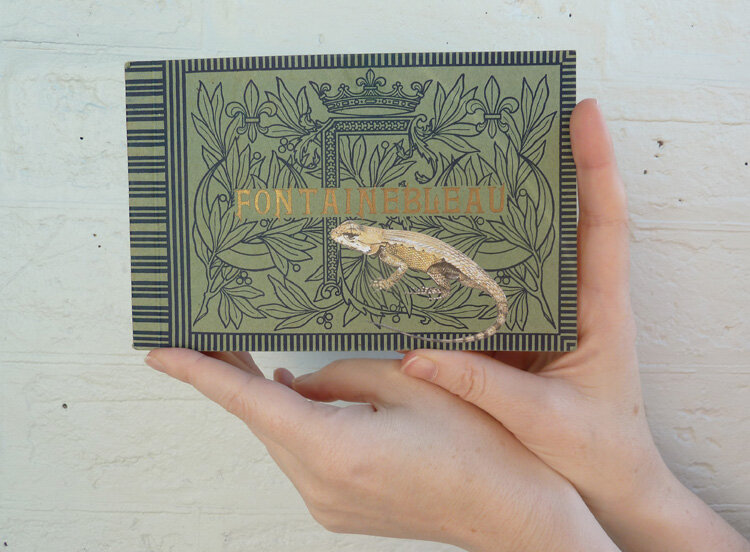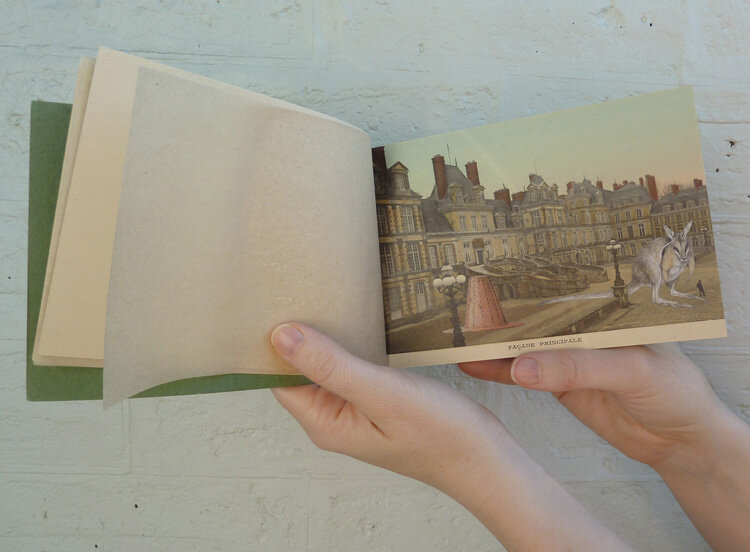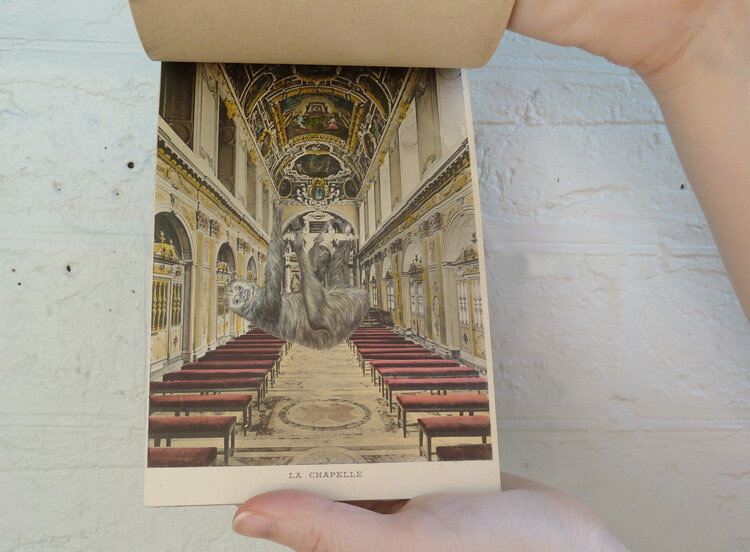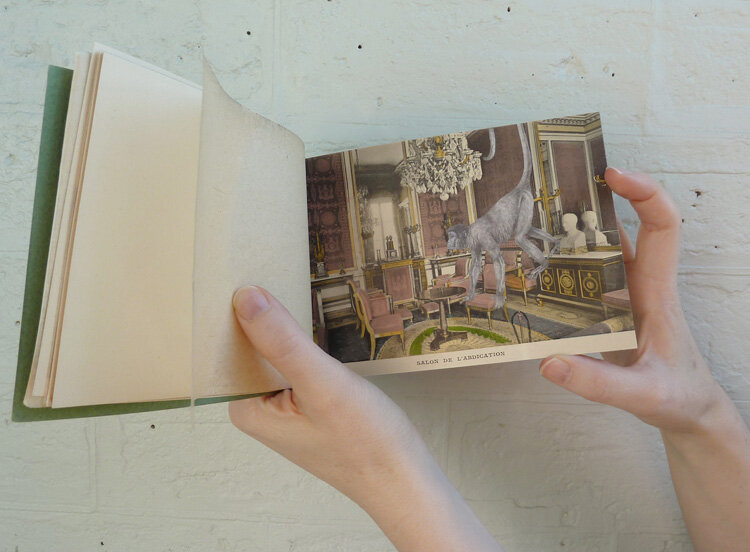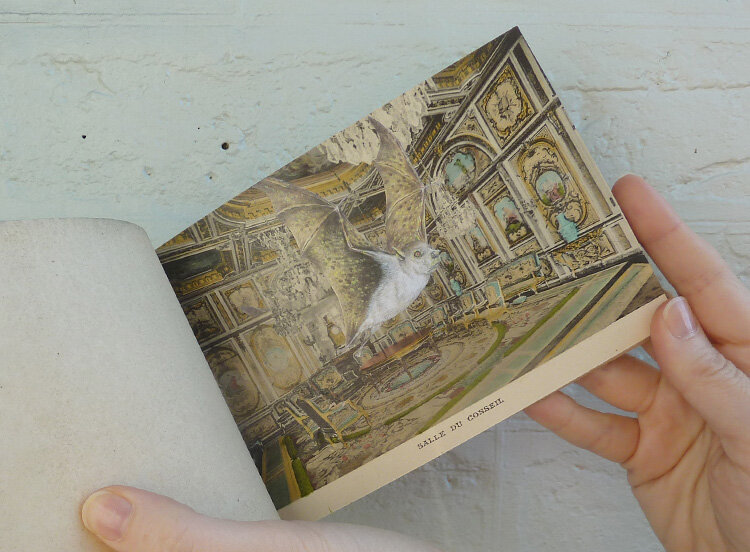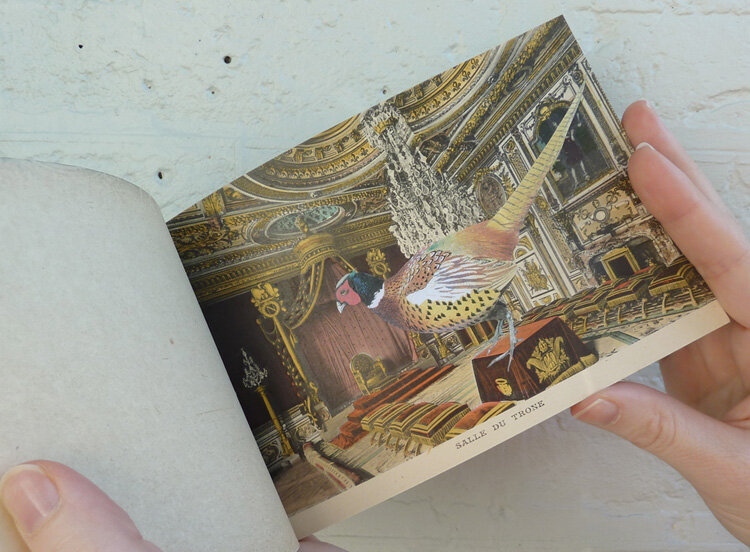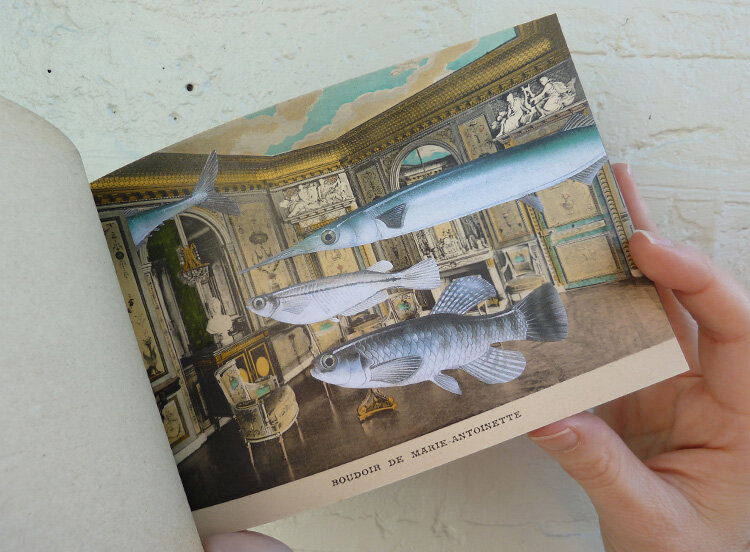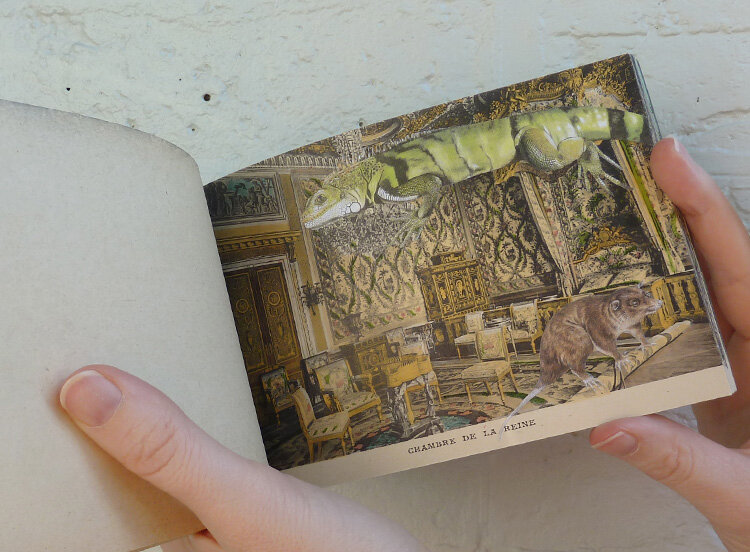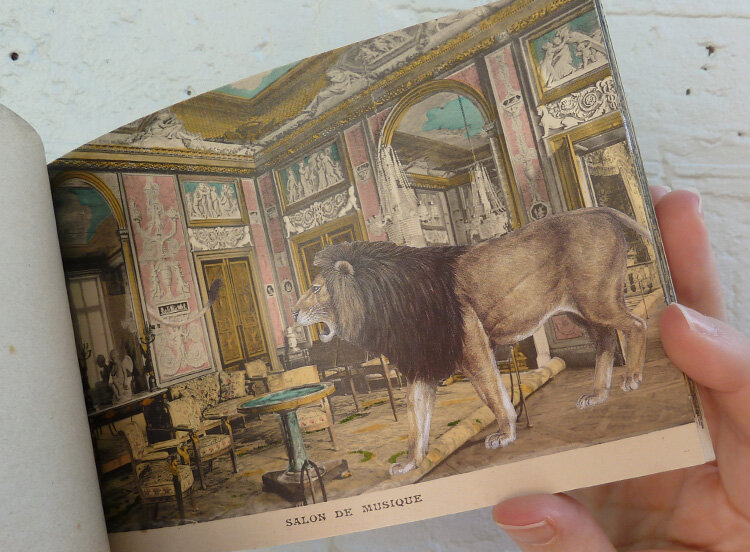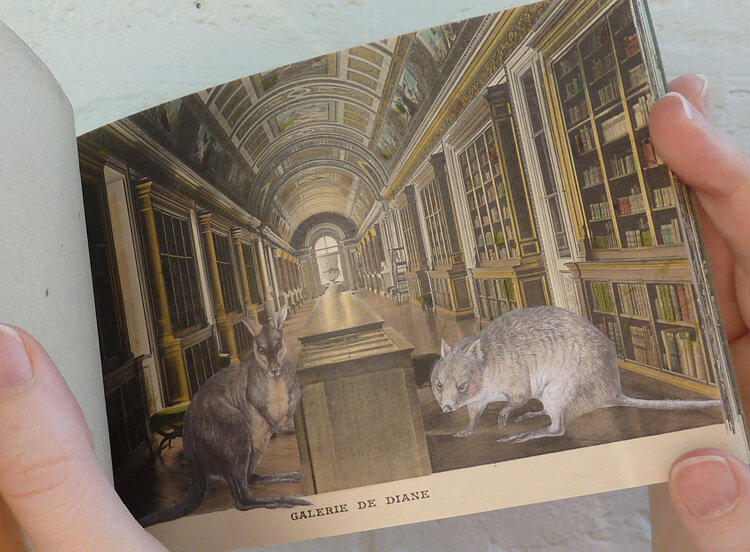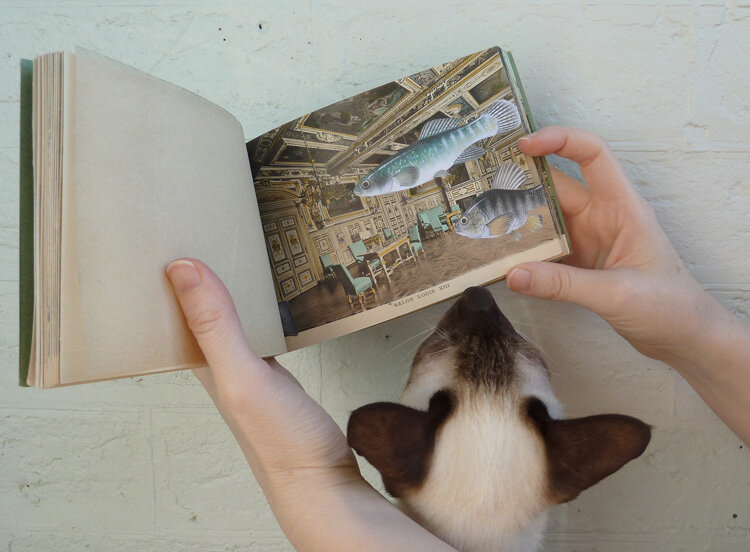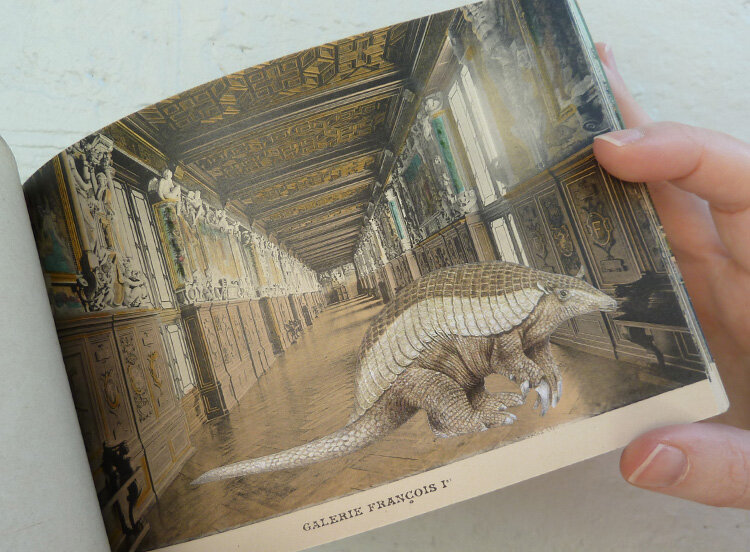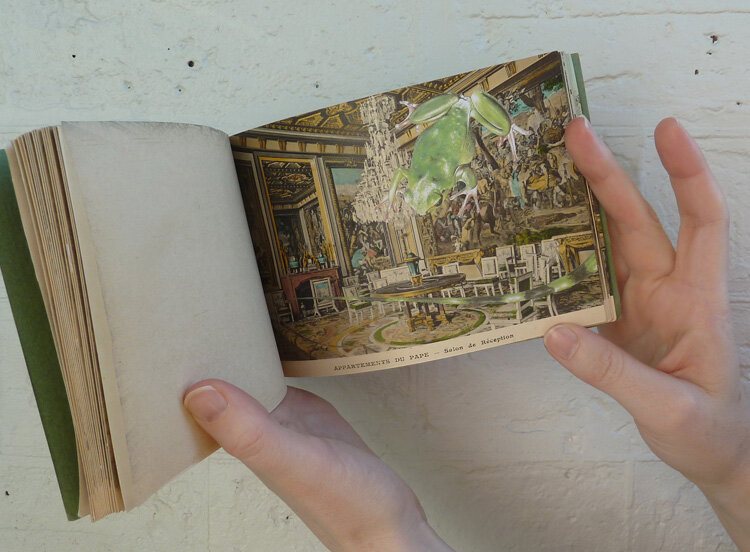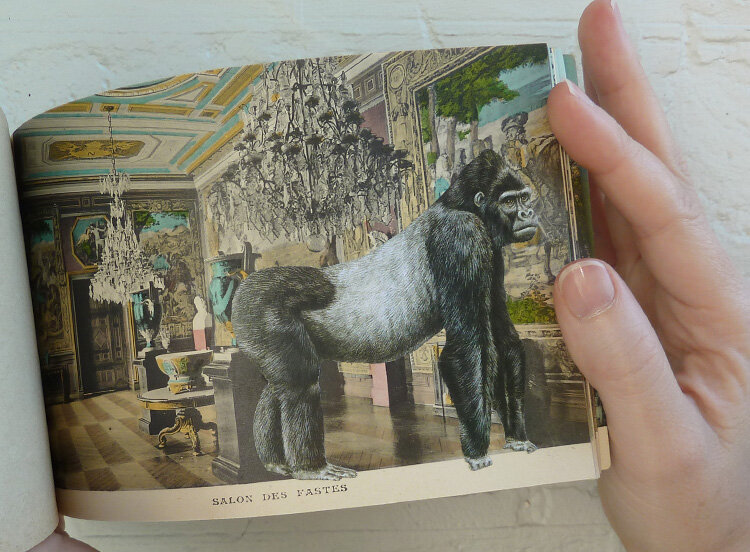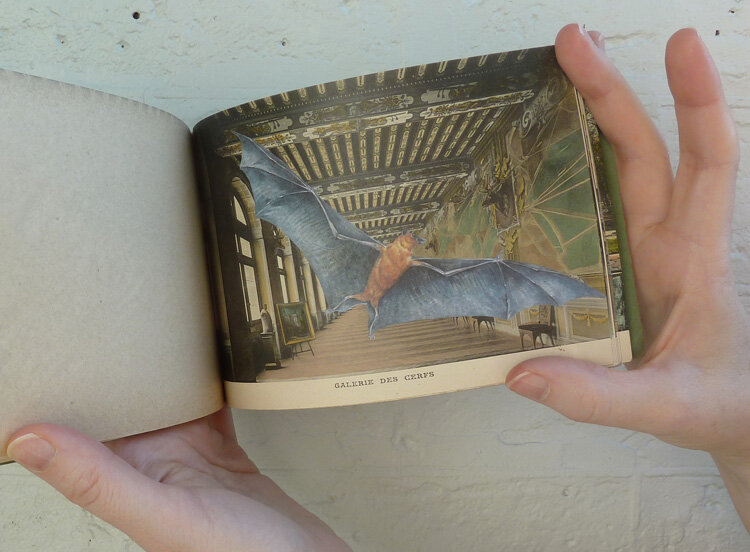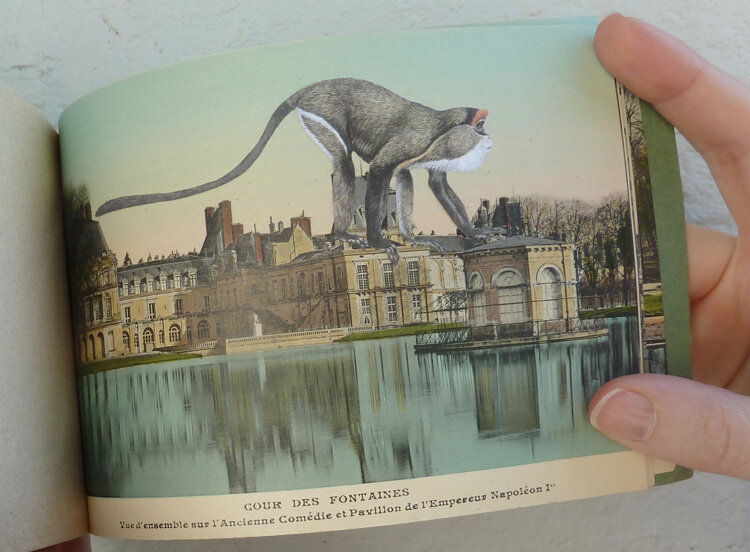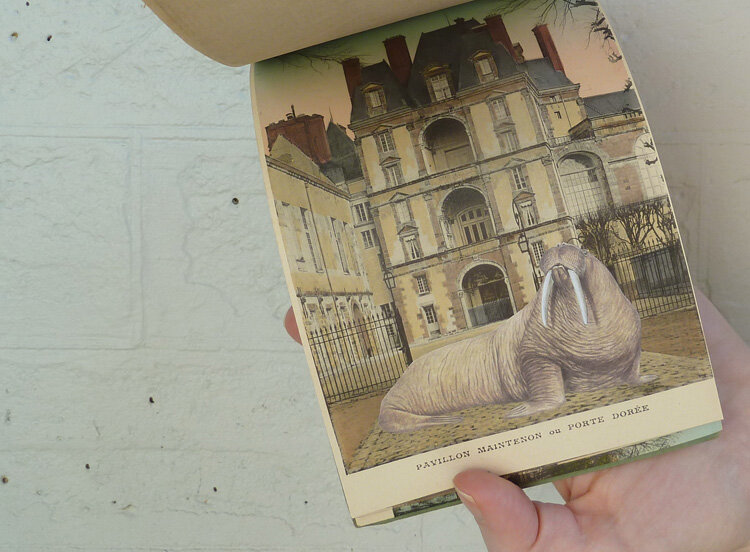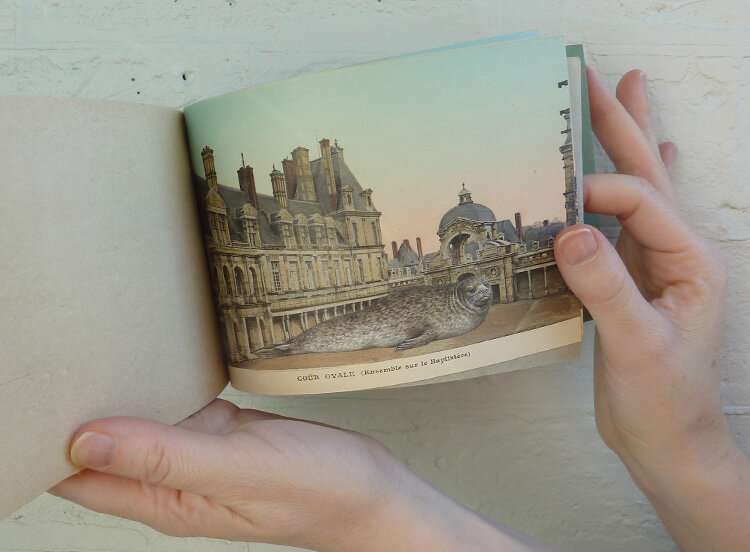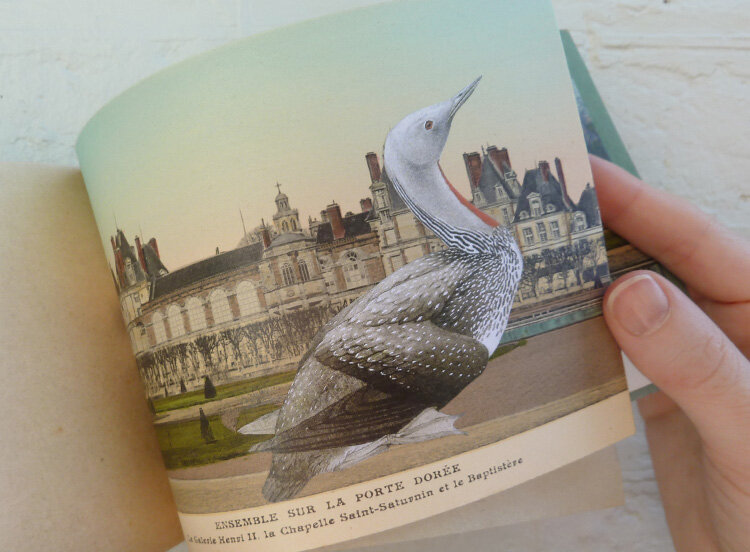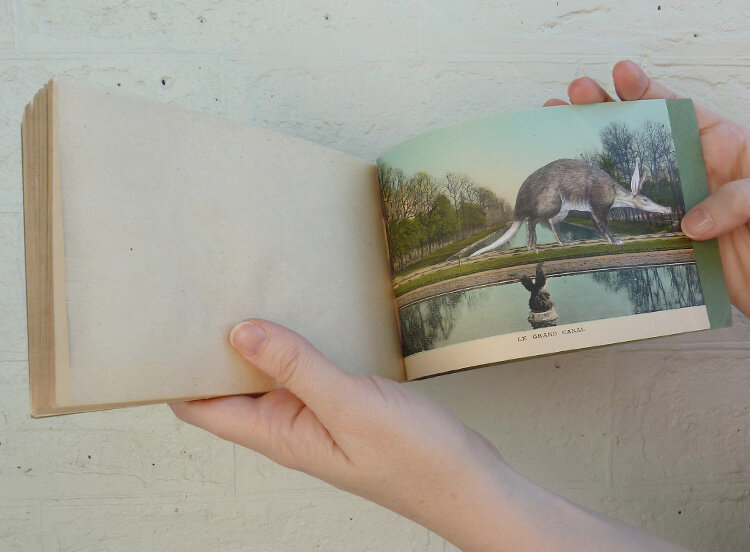FOLLOWING THE SOFT PERCUSSION OF YOUR TREAD
Look high! Look low!
Gracia Haby
Following the soft percussion of your tread
2015
Artists’ book, unique state, featuring collage elements and pencil
Housed in a linen Solander box with inlaid collage, In the borrowed costume of Petrouchka (c 1911), (bound by Louise Jennison)
An artists’ book twenty-six pages in length, made especially for the National Gallery of Victoria’s inaugural Melbourne Art Book Fair, NGV International, May 2015, which at first glance appears to take place in several of the 15, 000 rooms of the Château de Fontainebleau. Turn the pages to find a school of varied fish in the boudoir of Marie Antoinette, an opossum rolling back the carpet in readiness for dancing, a lion looking for his tail in the Salon de Musique, a contemplative kangaroo roaming the grounds, and a sure-footed gorilla in the Salon des Fastes.
This artists’ book is now in the collection of the State Library of Queensland.
Gracia & Louise on making artists’ books
Anna Metcalfe
Our Stories, SLV blog
State Library Victoria
27th of April, 2015
This month we welcome guest bloggers Gracia Haby and Louise Jennison, the artists who created the spectacular piece featured on the cover of the latest La Trobe Journal. In this guest post, Gracia & Louise discuss their work with books and paper, and the nature of inspiration and collaboration.
For those of you we are yet to meet, we are besotted with paper for its adaptable, foldable, cut-able, concealable, and revealing nature. In our artists’ books, prints, zines, drawings, and collages, we use play, humour, and perhaps the poetic, to reel you in closer.
For us, above all, it is not the medium that is the greatest import, but the message. As our collaborative collage for the artists’ book edition of the La Trobe Journal shows, the animal is oft present and easily detectable, the centre of our paper stage. Hard to miss, over here and over there, the animal runs up hills, scales rooftops, and sometimes appears in the library considering flight. Gliding through a scene it is too large to be contained within or perhaps too manmade to call home, that it has a tail or feathers or furred muzzle is not solely why its form appears. For us, the animal is there to question our very behaviour, those moral principles one governs the self by, and to explore our relationship with the natural world. And so we seek to invite you to ponder and perhaps find that things are not always as they first appear.
Based in Melbourne, we work from home. And more often than not, we collaborate with each other. We rather fell into collaboration, many years ago now, and it is one based on harmony. To date, we have made 83 artists’ book titles and 93 zine titles. For a spell these two figures were in beautiful and accidental accord, but with the National Gallery’s inaugural Melbourne Art Book Fair approaching in May, we have created 11 new zines and an artists’ book of shrunken Salvaged Relatives on a deck of cartes de visite.
We decided early on in our collaboration, through an organic process, not to polish the same skills. We naturally lent towards different things and now bring those different things together to make one work not possible without the other. Working this way, a third work is made that belongs to us both.
Similar things influence us, but to the collaboration, one of us brings a love of natural history, science, and wannabe bookbinder’s precision, and the other enjoys inverting facts about extinction and the plight of endangered animals to give them a different meaning. Armed with a pair of honeybee scissors, red herrings are tossed in, but not always. Sometimes, drawings are made to mirror collages, like the imagined portraits of the last pair of Great auks and their spinning-top egg. At other times, it is the collage with scissors and glue that will respond to the drawings. Sometimes, we pool our work together and see what we have before racing in our related but separate directions.
The two of us have been fans of the book for a long time now, and it is perhaps because no work is ever as you’d imagined or saw in your mind’s eye, that we keep working with books, paper, drawing, and collage. Every step, every part of the process, every learning curve, holds us entranced. We love the challenge artists’ books present, the possibilities, the history they hold, and the intimacy they awaken. The flexible medium of the book holds us in its palm rather than us holding the book in our own palms.
In the beginning, the medium of the artists’ book seemed, to us, to be free of rules and regulations. It also presented many new things to consider, from page layout and sequence to typographical decisions. Which paper stock? Will a watercolour wash make the paper ripple excessively? How can we get the most out of a singular sheet when it comes to printing a costly small edition? These questions we tossed in the air and arranged upon their landing, and working together meant that we could start to figure them out through mock-ups, trial and error, and groundwork.
From the outset, we knew next to nothing of the logistics of binding, but a love of reading books, and a limited knowledge of the history of artists’ books, coupled with a brief stint in Switzerland to study experimental binding techniques (on a Freedman Foundation Travelling Scholarship for Emerging Artists in 2002), has guided us along the way. And blind faith, or whatever you wish to call it.
At the back of our minds, the feeling that if we stuff this up, it has all been in vain, and this is a powerful motivator when joined with a love for what you are doing.
